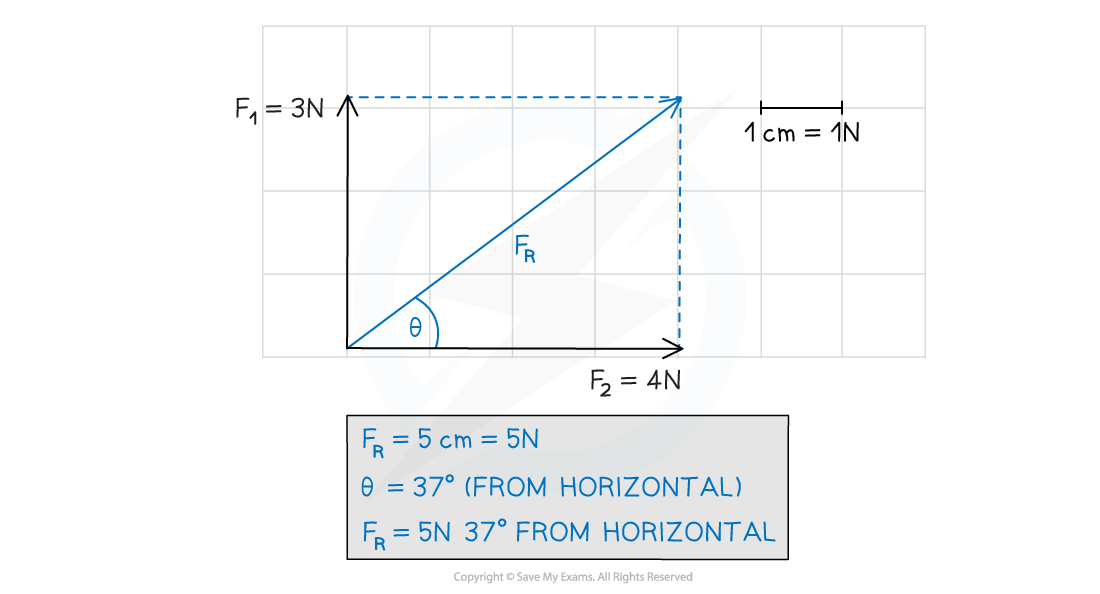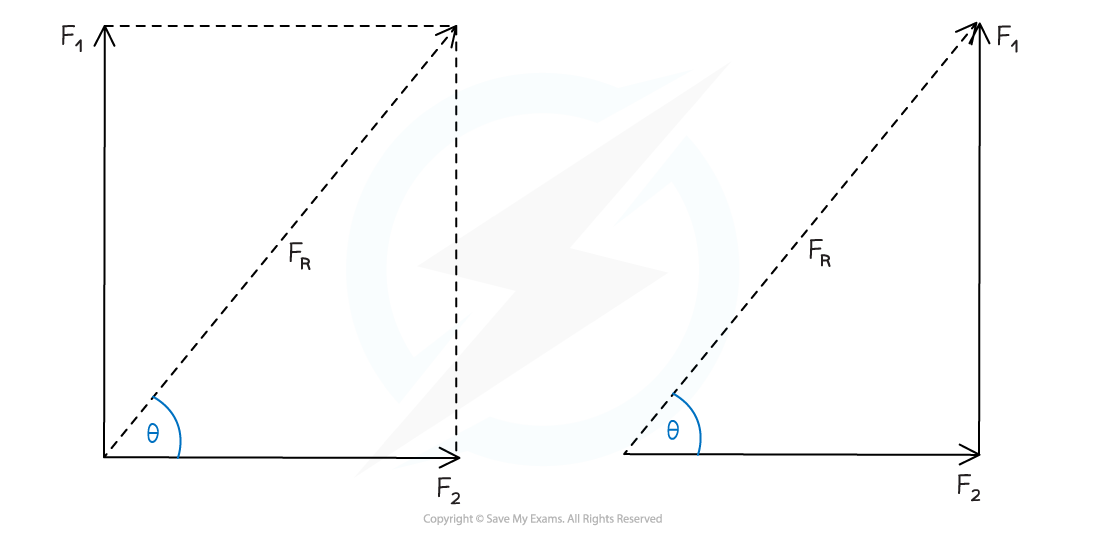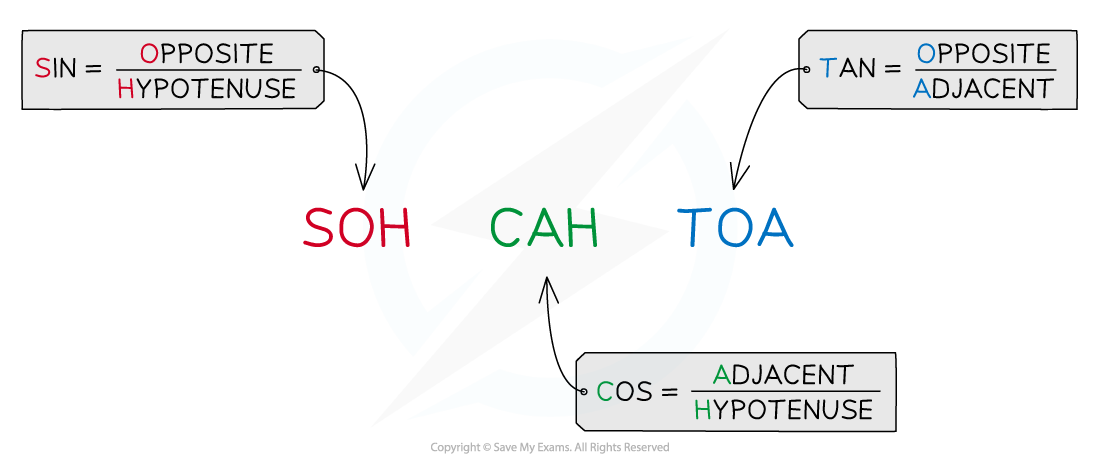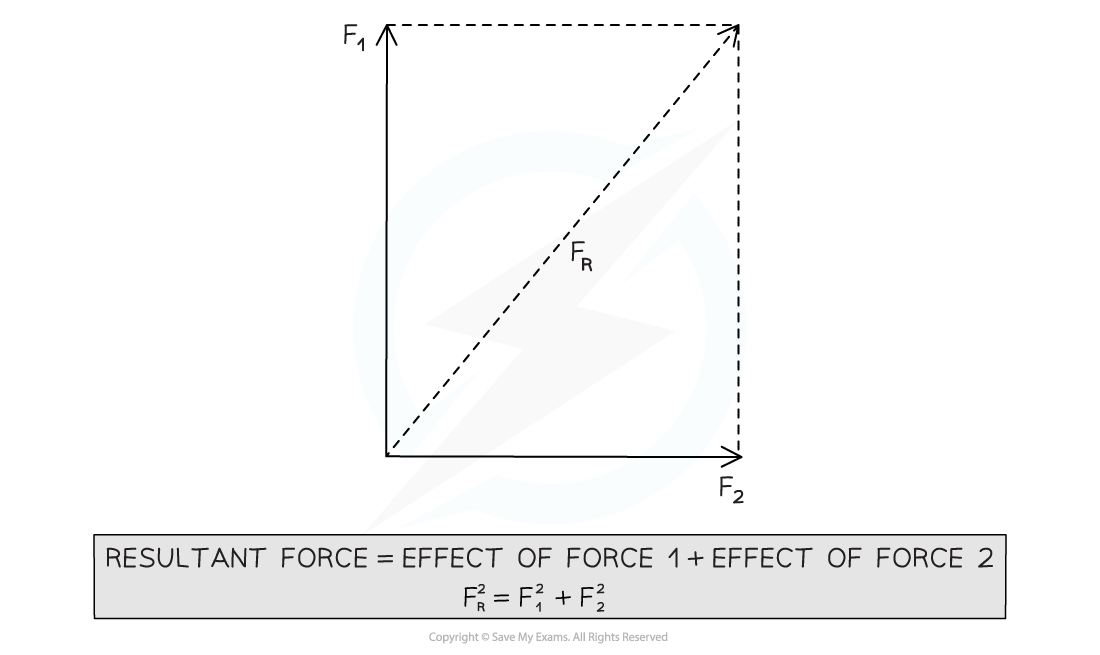Calculating with Vectors (Cambridge (CIE) IGCSE Physics) : Revision Note
Learn about how to draw vector diagrams for your IGCSE physics exam. This revision note includes the different ways vectors can be drawn and combined together.
Did this video help you?
Calculations with vectors
Extended tier only
Vectors can be drawn using vector diagrams
Vector diagrams
Vectors are represented by an arrow
The length of the arrow represents the magnitude
The direction of the arrow indicates the direction
the scale of the arrows should be proportional to the relative magnitudes of the forces
an arrow for a 4 N force should be twice as long as an arrow for a 2 N force
Vector diagram of two forces acting on an object

The length of the arrows are proportional to the magnitude of the forces, and show the direction that forces act in
Calculating vectors graphically
Vector diagrams can be used to combine vectors
Vectors at right angles to one another can be combined into one resultant vector
The resultant vector will have the combined effect of the two original vectors
For example, a resultant force vector will have the combined effect of two component forces
Component vectors are sometimes drawn with a dotted line and a subscript indicating horizontal or vertical
A force
, for example, may have two components:
is the vertical component of the force
is the horizontal component of force
To calculate vectors graphically means carefully producing a scale drawing with all lengths and angles correct
This should be done using a sharp pencil, ruler and protractor
Follow these steps to carry out calculations with vectors on graphs
Choose a scale which fits the page
For example, use 1 cm = 10 m or 1 cm = 1 N, so that the diagram is around 10 cm high
Draw the vectors at right angles to one another
Complete the rectangle
Draw the resultant vector diagonally from the origin
Carefully measure the length of the resultant vector
Use the scale factor to calculate the magnitude
Use the protractor to measure the angle

Vectors can be measured or calculated graphically using scaled vector diagrams
Combining vectors by calculation
In this method, a vector diagram is still essential but it does not need to be exactly to scale
The vector diagram can take the form of a sketch, as long as the resultant side, component sides are clearly labelled

Using a vector diagram to resolve two force vectors F1 and F2 into a resultant force vector FR
When the magnitude of only one vector is known, and the angle is known, then trigonometry can be used to find the magnitude of the missing vector
The mnemonic 'soh-cah-toa' can used to remember the trigonometric functions


Trigonometry can be used when the magnitude of one vector and the angle is known
When the magnitudes of two of the vectors are known, then Pythagoras' theorem can be used to find the magnitude of the missing vector


Pythagoras's theorem can be used when the magnitudes of two of the three vectors are known
Worked Example
A force acts on an object with 60 N to the right. A second force of 100 N acts on the same object in the upward direction.
Calculate the resultant force acting on the object.
Answer:
Step 1: Draw a vector diagram

Step 2: Calculate the magnitude of the resultant force using Pythagoras' theorem
Step 3: Calculate the direction of the resultant vector using trigonometry

Step 4: State the final answer, complete with magnitude and direction
Examiner Tips and Tricks
If the question specifically asks you to use the calculation or graphical method, you must solve the problem as asked. However, if the choice is left up to you then any correct method will lead to the correct answer.
The graphical method sometimes feels easier than calculating, but once you are confident with trigonometry and Pythagoras you will find calculating quicker and more accurate.
Did this video help you?

You've read 0 of your 5 free revision notes this week
Sign up now. It’s free!
Did this page help you?

